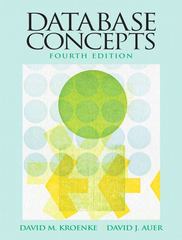Question
Other functions: const fold_left = function (f, base, ls) { if (ls.size == 0) { return base; } // Write the recursive fold_left call return
Other functions: const fold_left = function (f, base, ls) { if (ls.size == 0) { return base; } // Write the recursive fold_left call return fold_left(f, f(base, ls.first()), ls.shift()); }; const map = (g, ls) => fold_left((acc, value) => acc.push(g(value)), List([]), ls); const filter = (g, ls) => fold_left((acc, value) => g(value) ? acc.push(value) : acc, List([]), ls); const partition = (g, ls) => List([filter(g, ls), filter(value => !g(value), ls)]); /* TASK 5 (15pts): Now that we have all the building blocks, our final task is to implement a naive version of quicksort. Here's an explanation of how quicksort works: Given a list to sort, pick an element x from the list as a pivot. Now the remainder of the list is divided into two partitions, one partition with all the elements <= x, the other partition with all the elements > x. Now recursively call the quicksort algorithm on each partition and then combine the two partitions again (don't forget to put the pivot back in as well!). The base case for the recursion would be when there's only 1 or 0 elements in a partition, in which case the partition is returned as is. (The inductive case is described above.) Quicksort looks pretty scary in most languages, but with the help of functional programming, it should only be a few lines of code. For simplicity, pick the first element of the list as the pivot and the remaining list as the list to be partitioned. */ const quicksort = function(ls) { if(ls.size <= 1) { return ls; } /** **/ return undefined; /** **/ };
Step by Step Solution
There are 3 Steps involved in it
Step: 1

Get Instant Access to Expert-Tailored Solutions
See step-by-step solutions with expert insights and AI powered tools for academic success
Step: 2

Step: 3

Ace Your Homework with AI
Get the answers you need in no time with our AI-driven, step-by-step assistance
Get Started


